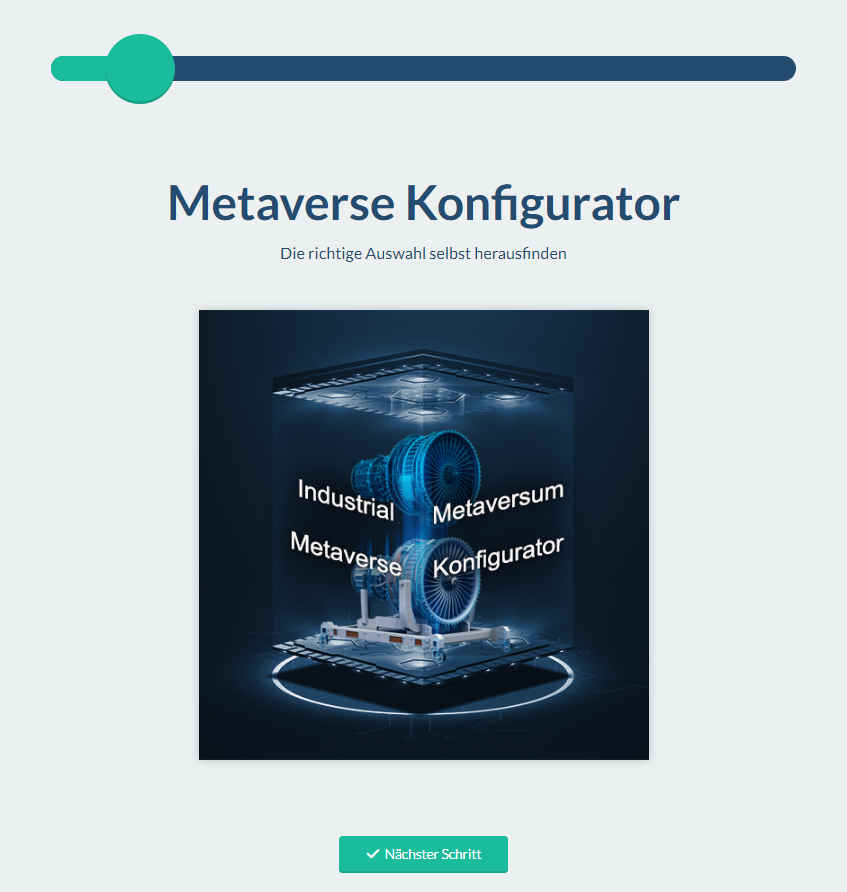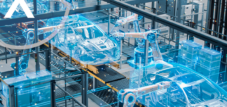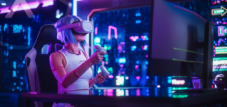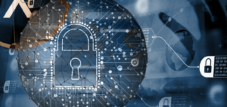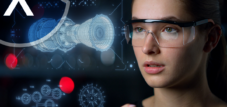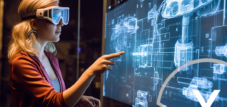The Bluefield scenario as a hybrid solution in the IoT, digital transformation with XR technologies and the Industrial Metaverse |Big Bang
Language selection 📢
Published on: October 6, 2023 / update from: October 6, 2023 - Author: Konrad Wolfenstein
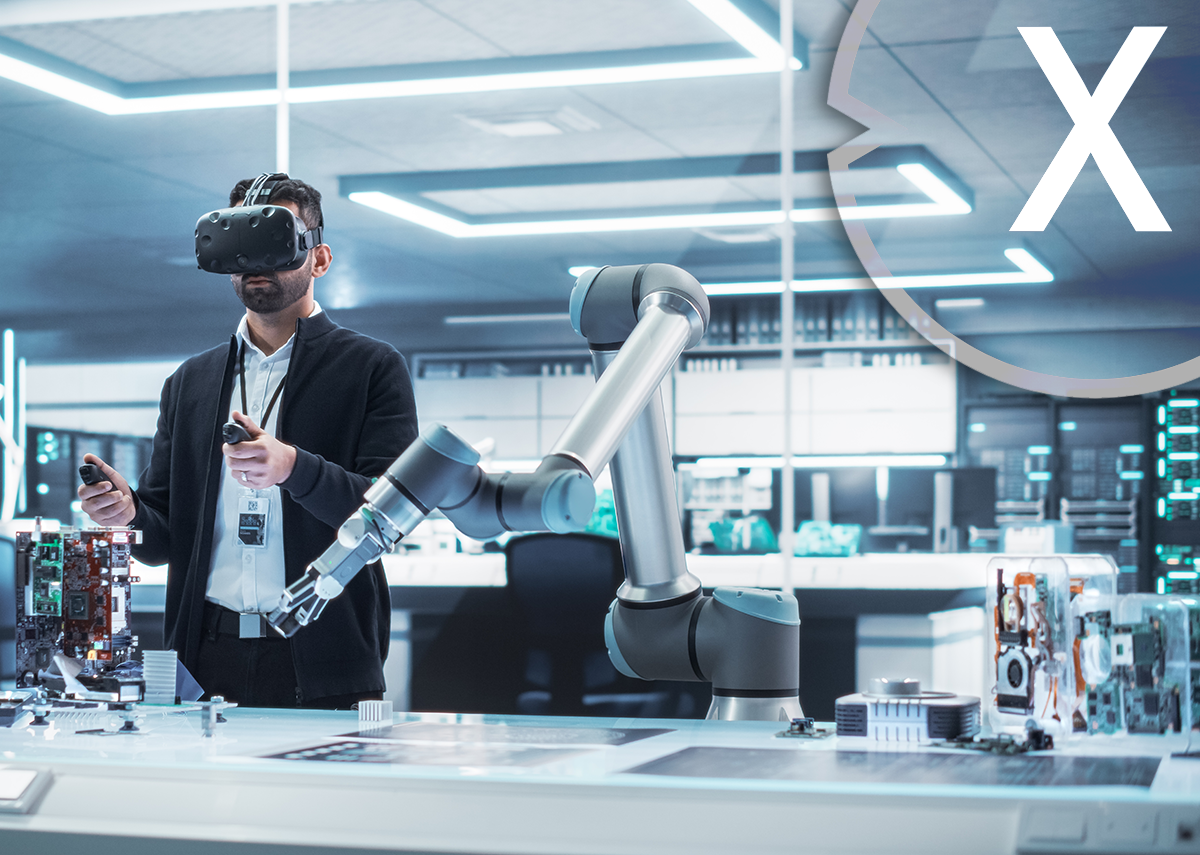
The Bluefield scenario as a hybrid solution in digital transformation and industrial metaverse – Image: Xpert.Digital
🔵🌐 Introduction: Bluefield concept
The concept of the “Bluefields” occupies an average position between the Brownfield and Greenfield scenarios in the world of the Internet of Things (IoT), the digital transformation, extended reality (XR) and industrial metaverse. While Brownfield scenarios affect the modernization and optimization of existing systems and infrastructures, Greenfield scenarios focus on building new systems from scratch. Bluefield acts as a kind of “hybrid solution” that integrates both elements of the Brownfield and the Greenfield to use the advantages of both worlds.
🤔 Brownfield vs Greenfield
Before we delve deeper into the bluefield concept, it is important to clarify the differences between brownfield and greenfield. Brownfield scenarios are already widespread in companies and involve updating or expanding existing systems, be it by integrating IoT sensors into existing machines or by implementing XR technologies to train employees. The main advantage is that it uses existing infrastructure, which is usually more cost-effective. However, these systems may be outdated and have technical limitations.
🔵 The Bluefield concept
The Bluefield model aims to combine the best of both worlds. This involves retaining elements of the brownfield infrastructure while adding greenfield components. This could mean, for example, integrating modern IoT sensors and actuators into an existing production line, while simultaneously developing an XR-based interface for remote monitoring and control.
🕶️ Integration of XR technologies and Industrial Metaverse
The digital transformation is another aspect that often plays a role in Blueefield scenarios. In particular, XR technologies such as Virtual Reality (VR), Augmented Reality (AR) and Mixed Reality (MR) can be extremely useful in this context. They can be used to train employees, simulate production processes or to improve quality control. In addition, the concept of the “industrial meta verse”-a virtual world that is a replica of the physical world and is updated in real time-is closely linked to Bluefield scenarios. With the combination of IoT and XR technologies in industrial metavers, companies can not only reduce their operating costs, but also develop innovative business models.
🎯 Advantages and challenges
The advantages of the Bluefield approach are many. It enables gradual transformation , lowers entry barriers and risks and at the same time offers space for innovation. However, implementing a successful bluefield project is not an easy task. It requires careful planning, close collaboration between different departments and professionals, and a clear vision and strategy.
🏁 Approach and implementation
The Bluefield concept offers a balanced approach to implementing IoT, digital transformation, XR technologies and industrial metaverse elements. By integrating brownfield and greenfield elements, companies can leverage the benefits of both approaches to achieve a more effective and cost-efficient transformation. However, as with any technological implementation, there are challenges that must be overcome. Careful planning and the involvement of all stakeholders are crucial to the success of a bluefield project.
📣 Similar topics
- 🌐 Bluefield: The hybrid solution in the Internet of Things
- 🌳 Brownfield vs. Greenfield: What's the difference?
- 🔄 Digital transformation through the Bluefield concept
- 🎮 XR technologies in the industrial metaverse
- 🏭 Integration of IoT into existing infrastructures
- 🤖 The Industrial Metaverse: A New World of Possibilities
- 💡 Advantages and challenges of the Bluefield approach
- 🛠 Planning and strategy for a successful bluefield project
- 📊 Cost efficiency and flexibility through Bluefield
- 👥 The role of stakeholders in Bluefield projects
#️⃣ Hashtags: #Bluefield #BrownfieldVsGreenfield #DigitalTransformation #XR Technologies #IndustrialMetaverse
🗒️ Xpert.Digital: A pioneer in the field of extended and augmented reality
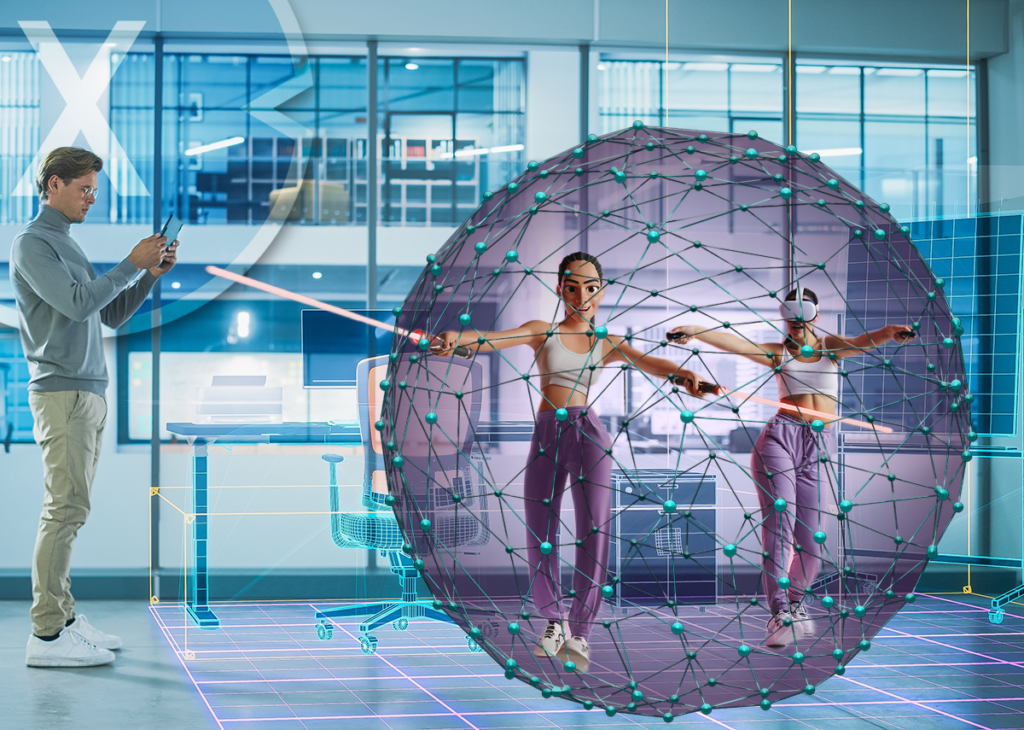
Find the right Metaverse agency and planning office such as a consulting firm - Image: Xpert.Digital
🗒️ Find the right Metaverse agency and planning office such as a consulting firm - search and search for top ten tips for consulting & planning
In the age of digitalization, where technologies such as Extended Reality (XR) and the Metaverse are constantly becoming more relevant, Xpert.Digital positions itself as an opinion leader and pioneer. With over 1,500 specialist articles, Xpert.Digital has established itself as a central point of contact for the industry.
🌌 Extended Reality (XR): The best of both worlds
Extended Reality is a collective term that includes virtual reality (VR), mixed reality (MR) and augmented reality (AR). Xpert.Digital is committed to creating immersive XR experiences that are both informative and entertaining.
- Interactive Experiences: XR allows users to immerse themselves in virtual worlds and interact with their surroundings in ways previously unimaginable.
- Education and Training: XR can be used for educational purposes to convey complex topics and concepts in an understandable and tangible way.
- Entertainment: Whether games, films or art – XR opens new horizons in digital entertainment.
🔮 Augmented Reality (AR): See the world through digital eyes
Augmented Reality, a particular focus of Xpert.Digital, makes it possible to integrate digital information or graphics into the real world. The possibilities are nearly unlimited.
- Marketing and Advertising: AR can be used to create interactive advertising campaigns that engage customers in a whole new way.
- Everyday help: From navigation apps that project the route directly onto the street to furniture apps that show what a new sofa would look like in the living room - AR makes it possible.
🌐 The Metaverse: The Next Big Thing
The Metaverse is a virtual world where people can interact through avatars and create shared experiences. Xpert.Digital recognizes the enormous potential of the Metaverse and is working to translate this potential into usable products and services.
- Social Interaction: The Metaverse offers the opportunity to connect with people from all over the world and share common experiences.
- Economy and trade: Virtual goods and services can be traded in the metaverse, which opens up completely new business models and sources of income.
- Creative Freedom: From building your own worlds to designing custom avatars, the Metaverse is a place of endless creative possibilities.
🚀 Xpert.Digital at the forefront of innovation
Xpert.Digital shows how a company can be at the forefront of the technological revolution. With their focus on XR, AR and the Metaverse, they are well positioned to shape and define the future of digital interaction.
More about it here:
🌐Digital transformation using the 🔵 Bluefield model: A systematic and controllable approach with built-in flexibility
In an era where digital technology acts as the backbone of modern businesses, the importance of digital transformation has increased. This is where the Bluefield concept comes into play, which supports companies in implementing their digitalization strategies gradually and with low risk.
🚶♀️ Step-by-step approach
In contrast to radical changes, which are promoted by other concepts such as 'Big Bang', the Bluefield concept pursues a gradual approach. This enables companies to constantly evaluate the progress and make necessary adjustments without endangering the entire process. It is an organic growth approach that takes more time, but has a soothing effect for many stakeholders.
📋 Manageability and control
Another advantage of the Bluefield concept is its manageability. Because the transformation process is broken down into smaller, more manageable steps, decision makers can better plan and monitor progress. This not only promotes control, but also reduces the risk of poor decisions that could have far-reaching consequences.
🛠️ Error correction and flexibility
Mistakes are inevitable in every project. However, what sets the Bluefield concept apart is its flexibility in terms of corrections. Because implementation is gradual, the cost of fixing bugs or responding to unwanted developments is significantly lower. This flexibility allows the team to adapt to changing conditions without reevaluating or even canceling the entire project.
🗨️ Interaction with stakeholders
The gradual approach also allows for better communication and interaction with stakeholders. You can understand the process more easily through regular updates, which increases acceptance of the changes. Because they are involved in the process, they are less likely to feel blindsided by abrupt changes.
💲 Cost efficiency
Although the Bluefield concept may seem more expensive at first glance as it runs over a longer period of time, the overall costs may be lower. This is due to the reduction of risks and flexibility in adapting to new challenges. It is an investment in the stability of the company that can pay off in the long term.
🎯 Proactive strategy adjustment
The systematic approach of the Bluefield concept allows teams to analyze data and feedback in real time. This leads to a proactive adjustment of the strategy, which includes not only reactive corrections, but also improvements and optimizations. This makes the organization more competitive and agile.
📚 Pragmatic digital transformation
The Bluefield concept offers a pragmatic framework for the digital transformation of companies. Its step-by-step, manageable approach enables better planning, greater flexibility and closer stakeholder involvement. While this approach requires a longer duration and seemingly higher initial investment, the benefits in terms of risk reduction and long-term stability can easily outweigh these disadvantages. It is a balanced method that allows digital transformation to be carried out in a way that is both efficient and effective.
📣 Similar topics
1️⃣ The Bluefield concept: A guide for digital transformation 📘
2️⃣ Manageability in digitalization: How the Bluefield model helps 🎯
3️⃣ Step-by-step approach vs. Big Bang in corporate digitalization 🆚
4️⃣ Flexibility and error correction: The secret of the Bluefield -Concept 🛠️
5️⃣ Stakeholder management in digital transformation: A bluefield view 🤝
6️⃣ Cost efficiency through the Bluefield model 📊
7️⃣ How to minimize risks in digital transformation 💡
8️⃣ Proactive strategy adjustment with the Bluefield concept 🔄
9️⃣ Organic growth in digital Transformation: A Bluefield Approach 🌱
🔟 Long-Term Stability: Why the Bluefield Concept Pays Off 💪
#️⃣ Hashtags: #DigitalTransformation #BluefieldConcept #StepByStepApproach #CostEfficiency #StakeholderManagement
Our Industrial Metaverse configurator
Just try out our universally applicable (B2B/Business/Industrial) Metaverse configurator for all CAD / 3D demo options:
Xpert (B2B/Business/Industrial) Metaverse configurator for all CAD / 3D data can be used on all devices, one platform!
Suitable for:
🌌🔮 Differences between the Big Bang and Bluefield approaches 🌟
The terms “Big Bang” and “Bluefield” are two different approaches or concepts that are often used in the world of business strategy, especially for IT projects and transformations. Both concepts have their own advantages and disadvantages, but they are fundamentally different in their approach and implementation. In this text we will deal with the differences between these two concepts.
💥 Big Bang approach
The big bang approach is a strategy in which all elements of a system or project are implemented simultaneously. Here, a complete transformation or changeover is carried out in one fell swoop, often after a long planning and preparation phase.
📝 Features of the Big Bang approach
1. All or nothing
With Big Bang it is a “all-or-nothing” game. Either everything works as planned, or the risk of a complete failure is high.
2. High preparation time
A long and intensive planning phase is required to ensure that all elements are ready for the “big bang”.
3. Costly
This can be very costly due to the need to deploy all resources at the same time.
🔵 Bluefield approach
In contrast to the Big Bang, the Bluefield approach is more evolutionary and gradual. Changes are carried out in smaller, manageable steps, often parallel to the existing system.
📝 Features of the Bluefield approach
1. Risk minimization
Because changes are introduced gradually, the risk of complete failure is much lower.
2. Flexibility
The system remains flexible and adaptable throughout the transformation process.
3. Cost effectiveness
Since not all resources have to be mobilized at the same time, costs can be better controlled.
🤔 Key Differences
1. Risk factor
While the Big Bang approach is high risk because everything is implemented at once, the Bluefield approach is lower risk because changes are made gradually.
2. Cost structure
In the Big Bang model, costs are often front-heavy and high, while in the Bluefield approach, costs are spread over time and more manageable.
3. Time frame
The Big Bang requires a long preparation time, but the implementation is quick. With the bluefield approach, preparation time is often shorter, but implementation takes longer because it is done in phases.
4. Flexibility and adaptability
The Bluefield concept allows easier adaptation to changes, whether due to market requirements or technological developments. In the Big Bang model, this flexibility is rather limited.
5. Business Interruptions
In the Big Bang model, significant operational interruptions can occur, while in the Bluefield approach, normal operations can continue largely undisturbed.
🎯 Both approaches have their place
Both approaches have their merits and may be a better choice depending on the specific needs of a project or transformation. While the Big Bang approach may be suitable for well-defined, unchanging projects, the Bluefield approach offers more room for flexibility and is often better suited to complex, ever-changing environments.
The choice between the two should therefore be made carefully, taking into account factors such as risk tolerance, budget, time frame and flexibility requirements.
📣 Similar topics
- 💥 Big Bang vs Bluefield: An overview
- 📈 Strategies in IT project transformation: Big Bang or Bluefield?
- 🤔 Advantages and disadvantages of the Big Bang approach
- 🛡 Risk management in the Big Bang and Bluefield model
- 🕒 Time frames in Big Bang and Bluefield projects
- 💰 Cost structure: Big Bang vs. Bluefield
- 🔄 Flexibility and adaptability: which approach is better?
- 🚀 Preparation phase in the Big Bang and Bluefield approach
- 📊 Key differences between Big Bang and Bluefield
- ✅ Factors for choosing between Big Bang and Bluefield
#️⃣ Hashtags: #BigBangApproach #BluefieldApproach #ITProjectManagement #RiskManagement #CostEfficiency
🗒️ If you don't understand something or need advice, we also offer training and workshops
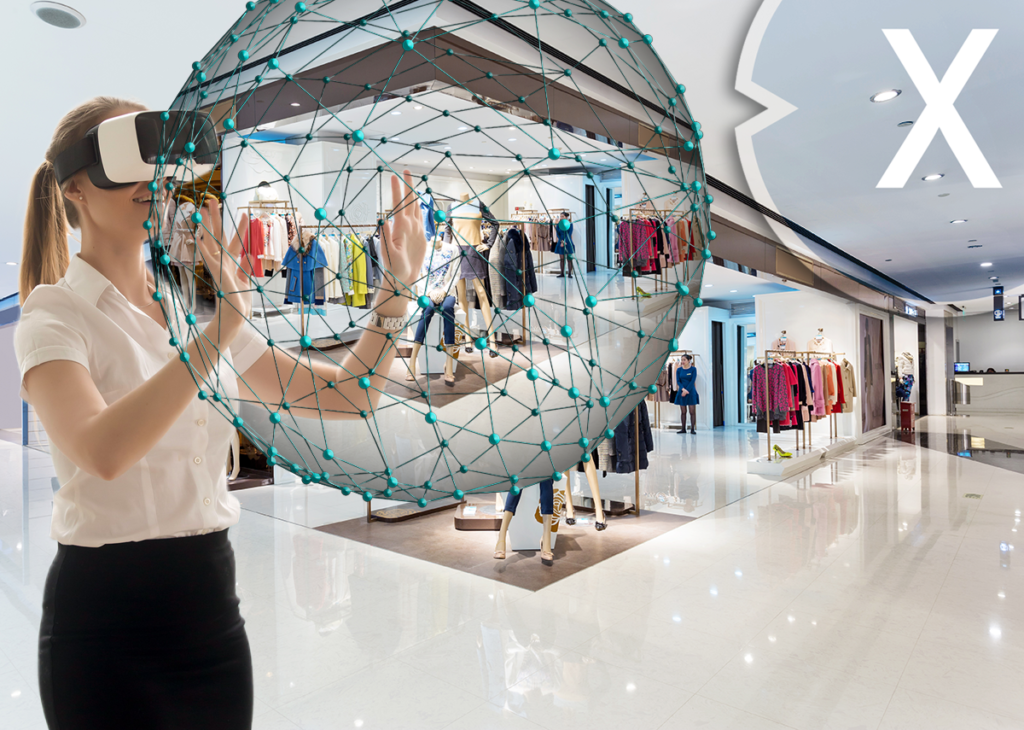
Metaverse & Extended Reality training, lecture or workshop for augmented, mixed and virtual reality – Xpert.Digital
In today's digital era, technology is evolving at a rapid pace. There are constantly new terms and technologies that need to be understood and mastered. If you're having trouble keeping up with topics like Metaverse, XR technologies, or immersive 3D, you're not alone.
More about it here:
🌐 XR technologies in the industrial metaverse and the integration of IoT into existing infrastructures
Digitization has increased rapidly in recent years and changes the way we live and work. In particular, two technologies, Extended Reality (XR) and the Internet of Things (IoT) have significant influence on industry and business. These technologies play an increasingly important role in the so -called “industrial meta verse” and in integration into existing infrastructures. In this article we explain what these technologies are, how you have developed and how you are used in industry.
🕶️ XR technologies in the industrial metaverse
Extended Reality (XR) is an umbrella term for all types of virtual, augmented and mixed reality technologies. In an industrial context, XR offers a wide range of possible applications, ranging from employee training to remote maintenance.
📊 Application examples
In production, for example, XR technologies can be used to provide employees with a detailed, three-dimensional view of machines. This makes it easier to identify problems and enables faster and more efficient maintenance.
In the area of facility management, XR can be used to virtually inspect buildings and increase the efficiency of space and resource planning. Imagine if an engineer could walk through a power plant without having to be physically present, receiving real-time data about temperature, pressure and other critical factors.
🌐 Integration in the industrial metaverse
The “industrial metaverse” is a virtual space in which data and digital twins of real objects and systems exist in a coordinated and interactive environment. XR technologies are ideally suited to navigate and manipulate this room, which leads to more efficient and safer operation.
🌐 Integration of IoT into existing infrastructures
The Internet of Things (IoT) refers to the networking of physical devices that can exchange data over the Internet. This offers a variety of applications for industries, from improving production lines to optimizing the supply chain.
📊 IoT sensors and data analysis
IoT sensors can provide a wealth of data in real time, which can then be used to optimize various processes. For example, temperature sensors can be used in a warehouse to ensure that conditions for storing products are optimal. This data can then be visualized using XR technologies to provide a comprehensive overview of operational status.
🛡️ Safety aspects
When integrating IoT into existing infrastructure, security is a key concern. Because IoT devices often communicate over the Internet, they are exposed to potential cyberattacks. Therefore, it is crucial to implement security protocols and encryption techniques to ensure the integrity of systems.
📚 XR technologies and IoT
XR technologies and IoT are more than just buzzwords; they are practical tools that companies can use to become more efficient and competitive. The combination of these technologies in the industrial metaverse creates opportunities for more efficient control of processes, improved data evaluation and ultimately an increase in productivity.
Integrating XR and IoT into existing infrastructure is a complex task that requires thorough planning and execution. But the benefits that come from this integration can be far-reaching and transformative. In the ever-evolving digital landscape, it is critical for businesses to stay current and leverage the technologies that will help them succeed in their respective market segments.
📣 Similar topics
- 🌐 Digitalization and its effects on industry and the economy
- 🛠️ XR technologies: From employee training to remote maintenance
- 💡 IoT in Industry: Applications and Benefits
- 🏭 The Industrial Metaverse: A Virtual Space of Possibilities
- 📊 Data analysis through IoT sensors for operational efficiency
- 🛡️ Security aspects of IoT integration
- 🤝 Combination of XR and IoT for optimized processes
- 🏢 Use of XR in facility management
- 🌡️ Real-time monitoring in industry through IoT
- 🔄 Transforming industry through digital technologies
#️⃣ Hashtags: #Digitalization #XRtechnologies #IoT #IndustrialMetaverse #Dataanalysis
🗒️ New territory for newbies: What you should know now about blockchain, tokens, NFTs, wallets, cryptocurrency and the metaverse
In today's digital world, terms such as blockchain, NFTs, wallets, cryptocurrencies and the metaverse have become increasingly present. For newcomers, these terms may seem confusing and complex at first. Here we try to explain these terms in an understandable way and give you important and interesting details about them.
More about it here:
🌐 Introduction to digital transformation in industry
The advancing digitalization and networking of industrial processes, often summarized under the keyword Industry 4.0, has enabled the introduction of innovative technologies such as the Internet of Things (IoT), the Industrial Metaverse and Extended Reality (XR). These technologies open up new possibilities for data analysis and monitoring of logistics and production to ensure improved operational efficiency and real-time processing.
Analysis and control of logistics and production are optimized through IoT sensors, while operational efficiency and real-time processing and control are enabled through the use of the Industrial Metaverse and XR technologies.
🔍 IoT sensors in logistics and production
Internet of Things (IoT) sensors play a critical role in data collection in modern manufacturing and logistics processes. These sensors can measure a variety of parameters including temperature, pressure, speed and even chemical compositions. This data is transmitted in real time to a central data platform where it can be analyzed and interpreted. This allows operations managers to make immediate decisions, such as addressing inefficiencies, reducing downtime, or improving product quality.
🌐💡 Industrial Metaverse
The term “Industrial Metaverse” refers to a networked digital ecosystem in which real and virtual elements merge in an interactive environment. In such an ecosystem, real-time data from IoT sensors can be seamlessly integrated with simulations, digital twins and artificial intelligence. This enables advanced control and monitoring of complex systems, from the supply chain to manufacturing control.
👓🌐 XR technologies for augmented reality
Extended Reality (XR) is a collective term for technologies such as Virtual Reality (VR), Augmented Reality (AR) and Mixed Reality (MR). These technologies can make the operation and monitoring of production and logistics processes much easier. For example, engineers and technicians can use AR glasses to gain instant access to important data without having to be physically there. In virtual reality, they can even control or adjust complex machines, increasing efficiency and response time when troubleshooting.
⚙️🔄 Integration for operational efficiency
The effective integration of these technologies can result in a huge increase in operational efficiency. Data from IoT sensors can be analyzed in real time to quickly identify potential bottlenecks or inefficiencies. This data can then be used in the Industrial Metaverse to simulate processes and identify optimization opportunities. Finally, XR technologies can help employees intuitively use these insights to adjust and control physical processes in real time.
⏲️🛠️ Real-time processing and control
One of the biggest advantages of these technologies is the possibility of real-time processing and control. In the past, data analysis and processing were often time-consuming processes that made it difficult to respond quickly to changes. However, with the latest technologies, companies can access data in real time and make instant adjustments, increasing both efficiency and flexibility.
🏁 The synergy
The synergy between IoT sensors, the industrial metaverse and XR technologies is revolutionizing the possibilities of data analysis and monitoring in production and logistics. These technologies enable unprecedented operational efficiency through real-time processing and control. By collecting, analyzing and applying data in real time, companies can not only reduce costs but also improve the quality of their products and services. This means they offer a valuable competitive advantage in the ever-changing industrial landscape.
📣 Similar topics
- 🏭 The role of IoT in Industry 4.0
- 🌐 Industrial Metaverse: The Future of Manufacturing
- 🛠 Extended Reality in industrial use
- 🔗 Networking and digitalization in production
- 📊 Data analysis for improved operational efficiency
- 📦 IoT applications in logistics and supply chain
- 🕹 Real-time processing and control in industry
- 🌐 Simulation and artificial intelligence in the Industrial Metaverse
- 📡 Integration of IoT and XR for operational excellence
- 🌐 Benefits of real-time data analysis in the Industrial Metaverse
#️⃣ Hashtags: #Industrie40 #IoT #IndustrialMetaverse #ExtendedReality #OperationalEfficiency
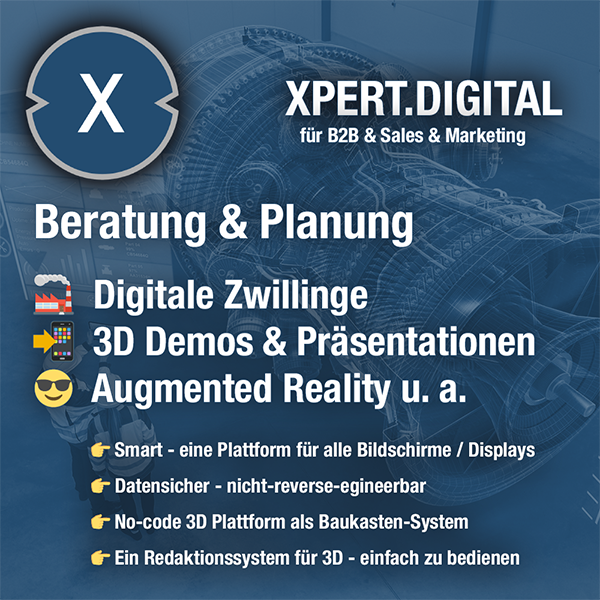
We are there for you - advice - planning - implementation - project management
Xpert.Digital - Pioneer Business Development
Smart Glasses & KI - XR/AR/VR/MR industry expert
Consumer metaverse or meta -verse in general
If you have any questions, further information and advice, please feel free to contact me at any time.
I would be happy to serve as your personal advisor.
You can contact me by filling out the contact form below or simply call me on +49 89 89 674 804 (Munich) .
I'm looking forward to our joint project.
Xpert.Digital - Konrad Wolfenstein
Xpert.Digital is a hub for industry with a focus on digitalization, mechanical engineering, logistics/intralogistics and photovoltaics.
With our 360° business development solution, we support well-known companies from new business to after sales.
Market intelligence, smarketing, marketing automation, content development, PR, mail campaigns, personalized social media and lead nurturing are part of our digital tools.
You can find out more at: www.xpert.digital - www.xpert.solar - www.xpert.plus



